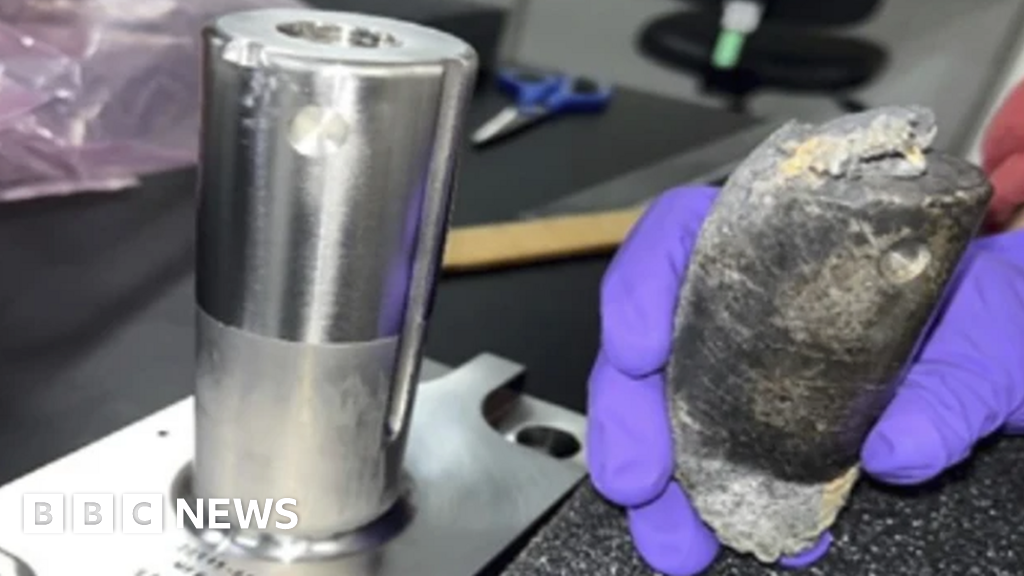A Florida family whose home was hit by space debris earlier this year is suing NASA for property damage and mental anguish.
A 1.6lb (0.7kg) metal object pierced the roof of Alejandro Otero’s home in Naples through two layers of roof last March.
NASA said the object was part of about 5,800 pounds of hardware ejected by the International Space Station after new lithium-ion batteries were installed.
Mr Otero said his son was nearly injured by the impact.
A press release from law firm Cranfill Summer lists damages including uninsured property damage loss, business interruption, emotional/mental anguish and third-party assistance costs.
Attorney Mica Nguyen Worthy said space debris is “a real serious problem with the increase in space traffic in recent years.”
“My clients are seeking adequate compensation for the stress and impact this event has had on their lives,” he said in a statement.
Mr Otero told CBS affiliate Wink-TV that the device made a “tremendous sound” when it exploded inside his home.
“I was shaking. I was in complete disbelief. What are the chances of something coming at my house with that much force and doing that much damage,” Mr Otero said.
The debris was determined to be part of a stanchion used to load batteries onto a cargo tray.
“The hardware was expected to burn up completely when it entered Earth’s atmosphere on March 8, 2024. However, one piece of hardware survived and affected a home in Naples, Florida,” the agency said.
According to NASA, the ISS will “conduct a detailed investigation” into how the debris burned up.
The agency has six months to respond to Otero’s claims.
Space debris is a growing problem. In April, sky watchers in California spotted mysterious golden streaks moving through space.
U.S. officials later determined that the aura was caused by burning debris from a Chinese rocket re-entering Earth orbit.
In February, a Chinese satellite known as “Object K” burned up as it re-entered the atmosphere over Hawaii.
Last year, a large metal dome found off the coast of Western Australia was identified as part of an Indian rocket. There are plans to display it alongside pieces of NASA’s Skylab, which crashed in Australia in 1979.

